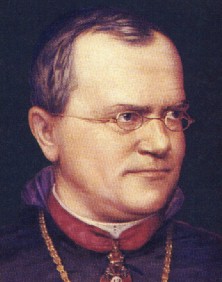
The History of Genetic Engineering
In 1865, the basis for modern day genetics was provided by the studies of a monk and the reproduction of the garden pea plant. Gregor Mendel was this monk and he would cross or self-pollinate specific types of pea plants based on simple phenotypic traits he could easily identify, such as flower coloration and seed type. This led to the formation and general acceptance of the idea that some sort of heritable components (genes) existed and were passed on from generation to generation in plants as well as other organisms.
In 1952, Hershey and Chase were able to discover that DNA and not proteins were the source of genetic material through the use of bacteriophages and radioactive phosphorus isotopes. In 1953, Watson and Crick discovered the double helical structure of DNA through semi-conservative replication. Restriction enzymes were discovered in the 1970ís. These enzymes are the key components for creating recombinant DNA for insertion. In 1973, the actual act of genetically modifying an organism for reintroduction was performed by biochemists Stanley N. Cohen and Herbert W. Boyer. They were among the first to cut DNA utilizing restriction enzymes, introduce other DNA fragments, and add this genetic information into certain types of bacteria for reproduction. 1985 was the year in which the NIH approved guidelines for introducing manipulated genetic information to be introduced into humans for treating certain hereditary diseases. Gene therapy has proven itself to be a potentially effective treatment option and has actually been employed to cure individuals of severe combined immunodeficiency disease, also known as the "bubble boy" syndrome. Currently, genetic engineering explorations receive funding for research and scientists are working on identifying the causes of many genetically derived diseases in the hopes that gene therapy may be employed as a treatment method. Restrictions exist for the funding of embryonic stem cell research within the United States and germ-line genetic engineering. Genetically engineered agricultural products are prominent throughout the United States as well as other parts of the world.

Gregor Mendel
References used
Human's Playground: Genetic engineering
http://library.thinkquest.org/04apr/00774/en/txt/history.html
This website was created for the course Honors 210:The Ideal at Monmouth College.